

Official Website of Tourism Malaysia. Citizenship and living in the UK. Designing Data-Driven Interfaces — Truth Labs. “Dashboard”, “Big Data”, “Data visualization”, “Analytics” — there’s been an explosion of people and companies looking to do interesting things with their data.
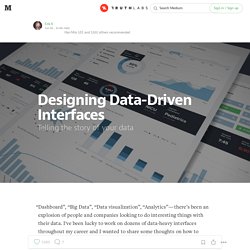
I've been lucky to work on dozens of data-heavy interfaces throughout my career and I wanted to share some thoughts on how to arrive at a distinct and meaningful product. Many people have already tackled this topic, so I'm going try and stick to the parts of our process that have the most impact. 1. Different users, different data Whenever you're designing complex systems there will inevitably be multiple users or personas to design for. Defining good personas and generating insights is an art within itself, and it’s not something I’m going to detail here. The important thing to remember about personas is to identify them upfront and organize your information architecture tasks and wireframes around them.
Below is a deliverable we used for a healthcare reporting application we worked on last year. 2. 3. Start with the Data 4. 5. 4 Critical Questions to Ask Before Designing Anything. It’s not always obvious which ideas are worth investing the time and resources into building.
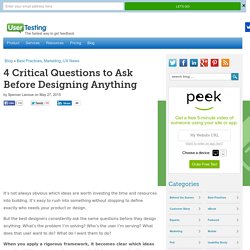
It’s easy to rush into something without stopping to define exactly who needs your product or design. But the best designers consistently ask the same questions before they design anything: What’s the problem I’m solving? Who’s the user I’m serving? What does that user want to do? What do I want them to do? When you apply a rigorous framework, it becomes clear which ideas you shouldn’t waste your time on—and which ones you should pursue. 1.
One of the most common mistakes is to jump in and start designing things before you know exactly what problem you’re solving for the user. Do a little research before you jump in Don’t start designing until you can clearly answer the question, “What problem are we solving?” 2. The Curse of Knowledge: How It Impacts You, and What to Do About It. If you’re responsible for introducing customers to a company or a product for the first time, there’s something you need to watch out for.

It’s called the curse of knowledge, and it can affect anyone who creates brand messaging, website copy, tutorials, or onboarding processes. The curse of knowledge means that the more familiar you are with something, the harder it is to put yourself in the shoes of someone who’s not familiar with that thing. 4 Critical Questions to Ask Before Designing Anything. Persona Empathy Mapping. “No one cares how much you know, until they know how much you care”- Theodore Roosevelt Empathy -- it’s a buzzword in the UX design world.
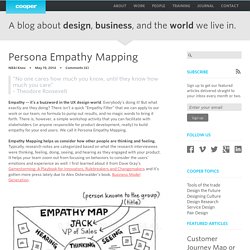
Everybody’s doing it! But what exactly are they doing? There isn’t a quick “Empathy Filter” that we can apply to our work or our team, no formula to pump out results, and no magic words to bring it forth. 3 things you need to know to develop a Buyer Persona successfully. In the last article we talked about the importance of Storytelling in image building and brand positioning, and also to strengthen relationships with our customers/audience (among other things obviously).
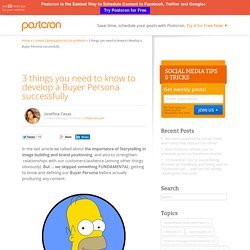
But … we skipped something FUNDAMENTAL: getting to know and defining our Buyer Persona before actually producing any content. I’ve started this article by referencing storytelling because the design of buyer persona really involves the storytelling of our buyer or ideal customer. It’s not enough to simply break them up based on age, place of residence, or socioeconomic status, but rather we need to know the story behind our buyers. We get that from much deeper qualitative data and by asking: who, what, when, where, why, and how.
It’s essential to understand that the buyer person (BP) gives us a great backdrop and lots of insight that’ll help align the efforts of different areas or aspects of our business focus. Now do you get why its so important? Why is my ROI so low? For example: DIY User Personas. Probably you already know what a persona is –if don’t check this -, and probably you, like me, build your first persona using some of the thousands personas layout you can find in the internet.
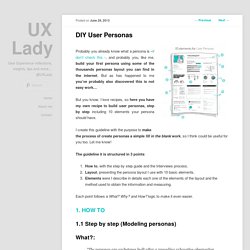
But as has happened to me you’ve probably also discovered this is not easy work… But you know, I love recipes, so here you have my own recipe to build user personas, step by step including 10 elements your persona should have. I create this guideline with the purpose to make the process of create personas a simple fill in the blank work, so I think could be useful for you too. Let me know! The guideline it is structured in 3 points: How to, with the step by step guide and the Interviews process.Layout, presenting the persona layout I use with 10 basic elements.Elements were I describe in details each one of the elements of the layout and the method used to obtain the information and measuring.
Each point follows a What? 1.1 Step by step (Modeling personas) What? A persona should include: